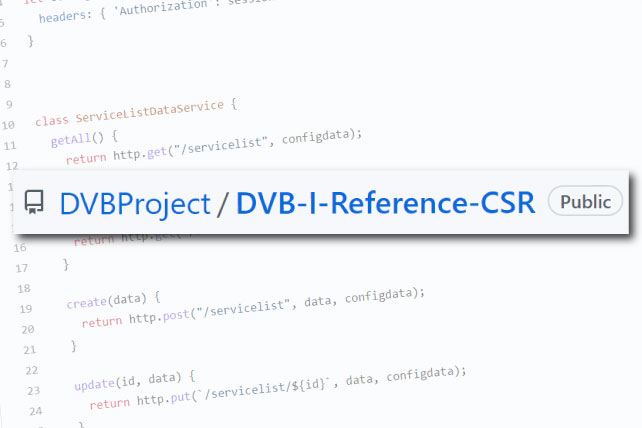
Testing begins on reference Central Service List Registry for DVB-I
The first phase of work on a reference Central Service List Registry (CSR) for DVB-I is nearing completion. DVB Members have now been invited to test the release, available on GitHub and also running on a public test server, with a view to ensuring that it fulfils the expected requirements.
The DVB-I service discovery specification allows for a CSR, operated for the benefit of all devices implementing a DVB-I client. The CSR provides information on service lists, which tell the user what content is available on their device. Service lists may be operated by, or on behalf of, various kinds of organizations such as operator or platform brands, national or regional regulators, or device manufacturers. The benefits of a CSR include enabling fast and efficient access to service lists and making it easier to find relevant services among – potentially – many thousands.
Since the deployment of a CSR could potentially play a role in kickstarting a horizontal market for DVB-I, earlier this year the DVB Project issued an RfP for the creation of a skeleton CSR to enable verification of how a fully functional CSR would perform under defined conditions. Sofia Digital, which had previously developed the official DVB-I reference application, was engaged for the CSR development work.
Testing before Phase 2
A test server is now running and DVB Members have been encouraged to download and install the CSR source code locally for testing. The source code and coordinates for the test server are available from DVB’s GitHub repository.
When the Phase 1 delivery has been validated by DVB, work will proceed on Phase 2.
This entails the provision of a fully secure operational system including complete (external) multi-user and admin security, secure user management, and frameworks for mitigation against malicious actions, denial of service attacks and other common threats. This second phase will also deliver documentation of the design and implementation of the CSR code showing how broadcasters, network/platform operators and their suppliers may re-use all or part of the code as part of their own offerings and how it may be extended.
Find more information about DVB-I at dvb-i.tv
